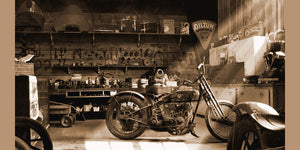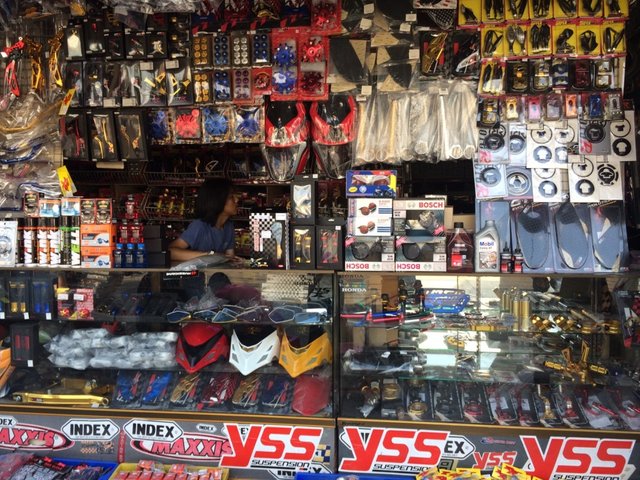Must-Have Motocross Gear: Boost Your Riding Experience Today
Must-Have Motocross Gear: Boost Your Riding Experience Today
Blog Article
Understanding the Necessary Components of a Motorcycle: A Comprehensive Guide for Enthusiasts
For bike lovers seeking to raise their riding experience and guarantee their bikes run smoothly, comprehending the crucial parts of a bike is extremely important. Each element, from the engine's elaborate functions to the vital function of the stopping devices, not just affects performance but additionally safety and convenience. This overview will certainly stroll via the basic components that every rider must recognize with, allowing informed selections in both upkeep and possible upgrades. As we begin this exploration, one must ask: exactly how does each component interact to produce the smooth ride every enthusiast looks for?
Engine Components

The camshaft plays a crucial duty in regulating the timing of the engine's valves, making sure the exact opening and closing essential for reliable gas and air consumption, in addition to exhaust expulsion. This timing is vital to maintaining optimum engine performance and performance. Additionally, the carburetor or gas injection system, depending on the bike design, is in charge of mixing air with gas in the correct ratio for burning.
The cooling system, either air or liquid-based, works to preserve the engine's temperature within operational limitations, avoiding getting too hot and making certain long life - motorcycle parts nz. Each part, carefully developed and integrated, adds to the seamless operation of the engine, specifying the motorbike's power output and total performance
Transmission System
Essential to the motorcycle's functionality, the transmission system makes certain efficient power transfer from the engine to the wheels. This system comprises a number of crucial components, including the clutch, transmission, and last drive, each playing an essential duty in translating the engine's power right into movement. The clutch, generally run by a hand lever, offers to involve and disengage the engine from the transmission, enabling smooth gear adjustments and regulated acceleration.
The gearbox, commonly described as the transmission proper, consists of a collection of gears that riders can by hand shift with to readjust the bike's rate and torque result. These equipments are organized in a sequence that allows the motorbike to increase efficiently and preserve ideal engine performance across various rates. A lot of bikes make use of a sequential gearbox, requiring the cyclist to change gears in a predetermined order.
Braking Mechanisms
While understanding the transmission system is vital to harnessing a motorcycle's power, similarly crucial is the capability to manage and stop that power efficiently, which is where stopping systems enter into play. Brakes are crucial for safety and efficiency, supplying the biker with the needed control to browse different terrains and conditions. Generally, bikes feature two sorts of stopping systems: disc brakes and drum brakes.
Disc brakes are much more prevalent in modern-day motorbikes because of their exceptional efficiency. They contain a brake disc, caliper, and pads. When triggered, the caliper squeezes the brake pads against the spinning disc, transforming kinetic power into warm, therefore reducing the wheel. This system provides better warm dissipation, constant performance, and improved stopping power, particularly in damp problems.
Conversely, drum brakes, though less common, are still discovered in some motorbikes. They work by pushing brake footwear against the inner surface area of a drum connected to the wheel. While normally much less efficient in warm dissipation and quiting power, drum brakes are easier and extra cost-effective.
Understanding read the article these stopping systems' nuances allows cyclists to maintain their motorcycles properly and appreciate the design that ensures secure and my site effective stopping.
Suspension and Guiding
Suspension and steering systems are crucial components that significantly influence a bike's handling and experience comfort. The suspension system, including forks at the front and shock absorbers at the back, absorbs roadway abnormalities, boosting security and control. Front forks, typically telescopic or upside down, compress and rebound to minimize influences, while rear shock absorbers keep tire call with the road, vital for grip and safety.
Steering, focused around the handlebars, connects the motorcyclist to the motorcycle's directional control. The guiding head bearings make sure smooth procedure, permitting accurate maneuverability. Proper placement and upkeep of these bearings are critical for predictable steering response and lowering biker tiredness.
The suspension's adjustability is another vital facet; preload, damping, and rebound setups enable customization to fit different riding conditions and styles. This flexibility is vital for enhancing efficiency, whether browsing city roads or tackling rugged trails. Advancements like digital suspension systems offer real-time adjustments, improving trip high quality across varied surfaces.

Electric Solutions
After guaranteeing a smooth and regulated trip through reliable suspension and steering systems, focus transforms to the electric systems, a critical element of contemporary motorbikes. These systems play an important duty not just in starting the engine but likewise in powering numerous components that improve the capability and safety and security of the motorbike.
At the heart of a motorcycle's electrical system is the battery, which stores electric energy needed for beginning the engine and powering supporting systems - motocross gear. The alternator or generator, paired with the rectifier-regulator, guarantees the battery remains charged while the motorbike functions, converting power right into electrical power and maintaining voltage levels
The ignition system, one more crucial component, is accountable for sparking the air-fuel mixture in the engine's cyndrical tubes. Modern motorbikes often utilize a digital ignition system, using greater efficiency and integrity compared to traditional systems.
Illumination systems, consisting of fronts lights, tail lights, and indications, are additionally important, making certain exposure and security for the biker. Extra electronic elements such as sensing units, control units, and presents add to sophisticated features like gas injection monitoring, anti-lock braking systems (ABS), and electronic control panels, additionally enhancing the riding experience.
Verdict
A detailed understanding of their website a motorbike's vital components, consisting of the engine, transmission system, braking systems, suspension, guiding, and electric systems, is vital for lovers intending to optimize safety and security, performance, and convenience. Mastery of these components permits educated decisions regarding upkeep and upgrades, inevitably enhancing the riding experience. By incorporating this understanding, bikers can guarantee their bikes operate at peak effectiveness and dependability, thereby optimizing both pleasure and durability of their vehicles.
For motorbike lovers looking to raise their riding experience and guarantee their bikes run efficiently, comprehending the crucial elements of a bike is critical.Indispensable to the motorcycle's capability, the transmission system ensures effective power transfer from the engine to the wheels.While comprehending the transmission system is essential to taking advantage of a bike's power, just as essential is the capability to control and quit that power effectively, which is where stopping systems come into play. Normally, bikes feature 2 kinds of braking systems: disc brakes and drum brakes.
A thorough comprehension of a motorbike's necessary elements, including the engine, transmission system, stopping devices, suspension, guiding, and electric systems, is essential for fanatics intending to maximize convenience, safety, and efficiency.
Report this page